“Bird Box” and bots: What’s real?
More stories from Kaiya Little
In a modern age of viral entertainment, it’s no surprise that the rapid fire spread of information can be the much-needed boost for new products to get off the ground. When there are big companies involved, though, some begin to question just how much their media presence impacts future purchases and content decisions.
After the release of the major-streaming service Netflix’s movie, “Bird Box”, the internet seemingly blew up over night. With users on Twitter, Instagram, and the like taking to the apps with original memes and jokes, it could be said that the marketing took care of itself, promoting viewership simply to understand the references.
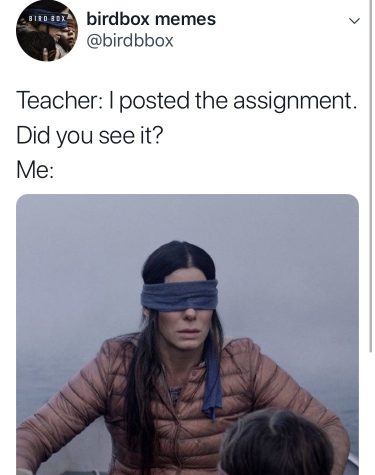
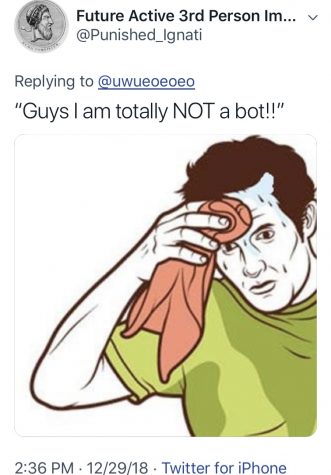
New Twitter user @uwueoeoeo made good use of her first time on the app by creating what soon would become a viral meme about Netflix’s” Bird Box” that was met with critics of its own.
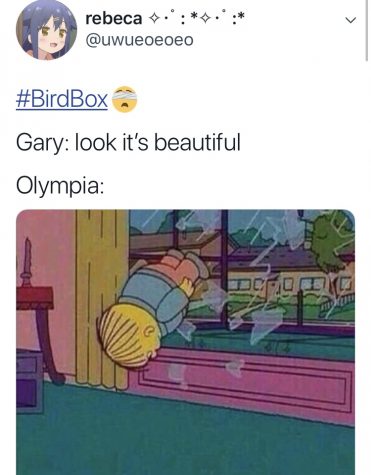
Rebecca’s tweet had other people on the platform questioning the validity of the source, some even going as far as accusing her directly of being a robot or being hired out by Netflix.
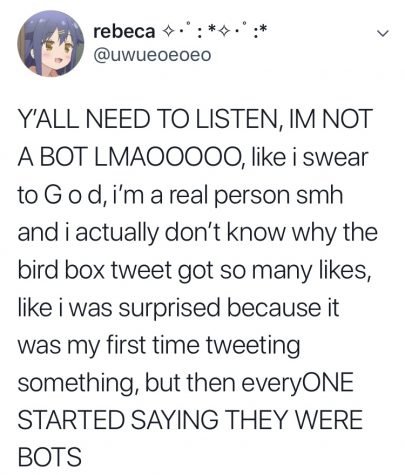
As outlandish as this idea that companies could be using secretive tactics to promote their ideas and work is, it’s not entirely unheard of.
In October of 1999 college film students Daniel Myrick and Eduardo Sánchez began what would be a month-long production stint with a shoestring budget of an estimated $20,000 – $25,000 for their horror film “The Blair Witch Project.”
Leading up to the movie’s initial release at the Sundance Film Festival, Myrick and Sanchez pushed a marketing scheme to generate the necessary buzz to attract viewers that consisted of fake missing person posters and websites filled with lore on the titular fright known as the Blair Witch.
The intentional fear factor that producers of the film used not only got people talking but was ultimately what boosted box office sales through the roof, with profits reaching around $248 million.
As beneficial and cost effective as this concept was for the movie, some may debate the ethics of such a thing when used on a larger scale.
This idea of a strategy that by definition uses low cost and unconventional marketing tools that in turn yield better results was first introduced by businessman and author Jay Conrad Levinson.
Levinson coined the term Guerrilla Marketing in his 1984 book bearing the same name, bringing a new meaning to easy and cheap marketing that was previously unheard of. The technique, often used in reference to irregular warfare against a traditionally larger military has been used consistently by small companies and artists.
As beneficial as guerrilla marketing has proven itself to be among the likes of companies like KitKat and Nivea and even lesser known TV studios, ad agencies, and charities, it still has its’ downfalls.
The intention of going guerrilla is to generate as much buzz as possible for a product at little expense for the company itself. When the opposite is achieved, business owners are at the most risk and are almost certainly in for a public relations scandal.
On Jan. 31, 2007, paid artists for the Cartoon Network show “Aqua Teen Hunger Force” went under fire for planting tiny LED signs depicting a character from the popular program in various places around the city of Boston. For weeks prior to discovery, the objects went unnoticed in the nooks and crannies of overpasses and grates until a passenger from a passing bus caught sight of a suspicious object.
Upon alerting the authorities, police were able to apprehend what was originally a perceived bomb threat and much to the citizen’s annoyance the so-called explosive was merely a harmless publicity stunt.
Cartoon Network’s parent company Turner Broadcasting Co. faced judgement from elected officials in Massachusetts and eventually agreed to pay an estimated $2 million in settlements to various agencies involved in the scare.
Now, if Netflix were to be using automated bots to promote their content as some sort of guerilla strategy then it wouldn’t be much of a stretch to suggest that it worked, with “Bird Box” reaching over 45 million streams within the first week of release according to one of Netflix’s official twitter accounts @NetflixFilm
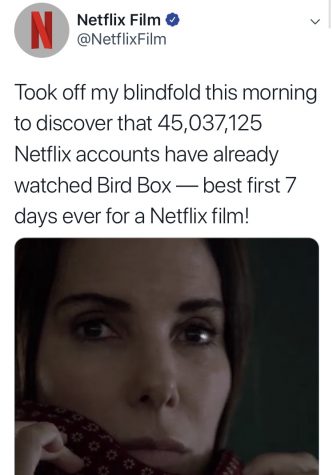
Staff writer Taylor Lorenz for The Atlantic voiced her frustrations on the robot debate with logical arguments and even went directly to the source itself to confirm.
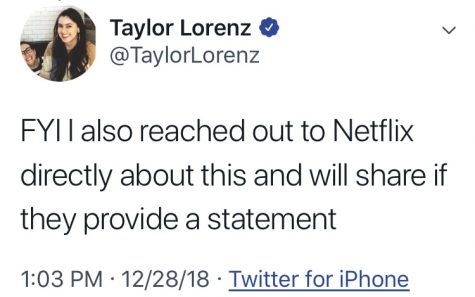

So, maybe it’s more likely that actual human people are behind all the funny memes and not some scary robot owned by a huge media cooperation, but that doesn’t always answer for the moral toss up between consumer and producer.
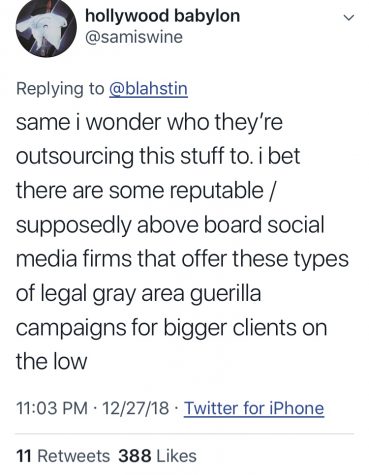
Conspiracy and ethics aside, the internet makes marketing easy and quite honestly more entertaining. Still, I have to ask, and be honest. Does this bot make my tweet look funny?
Senior and third year reporter, Kaiya Little, is the first Editor-in-Chief of The Bridge. She hopes to major in communications and write for a publication...
